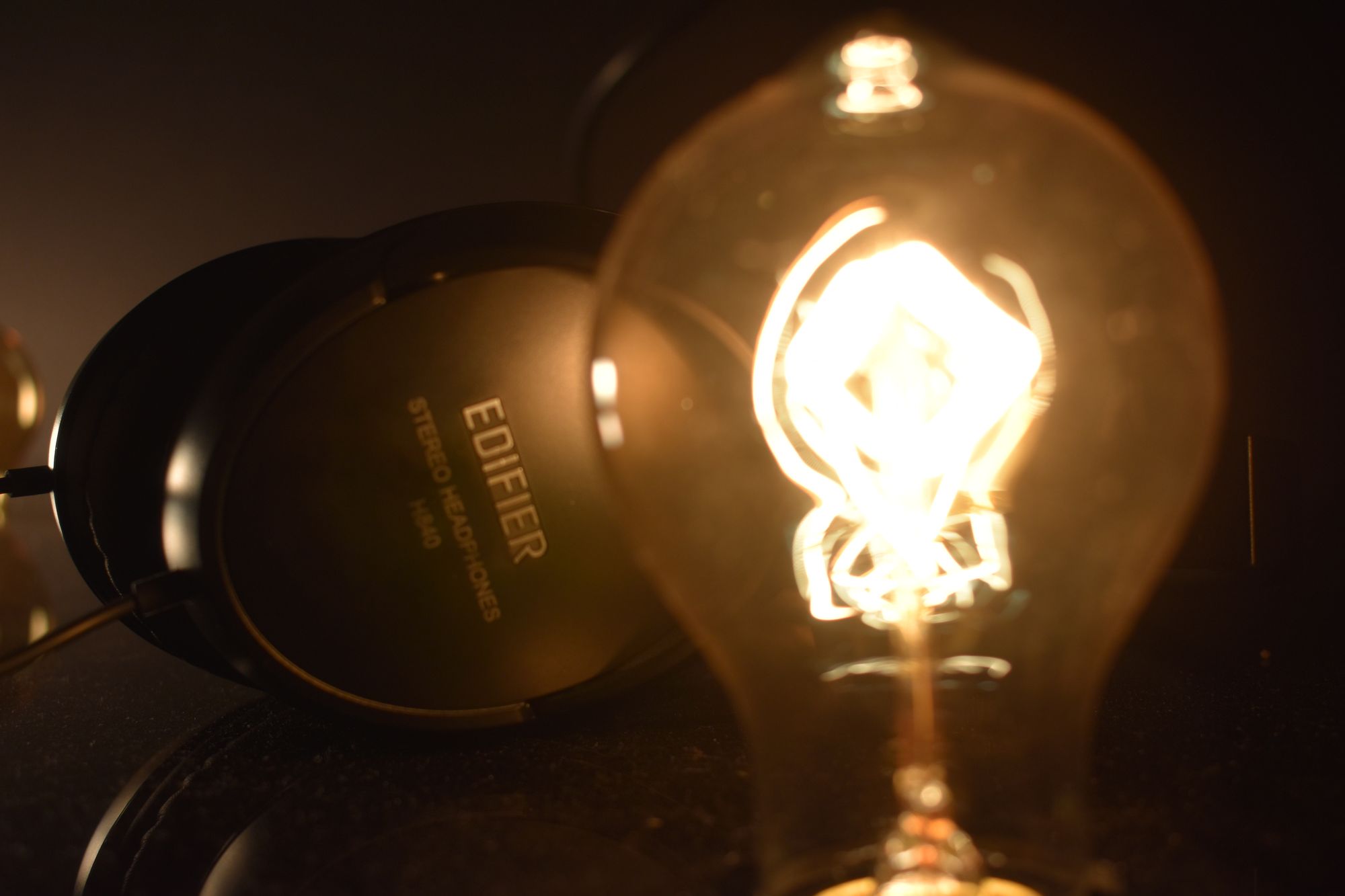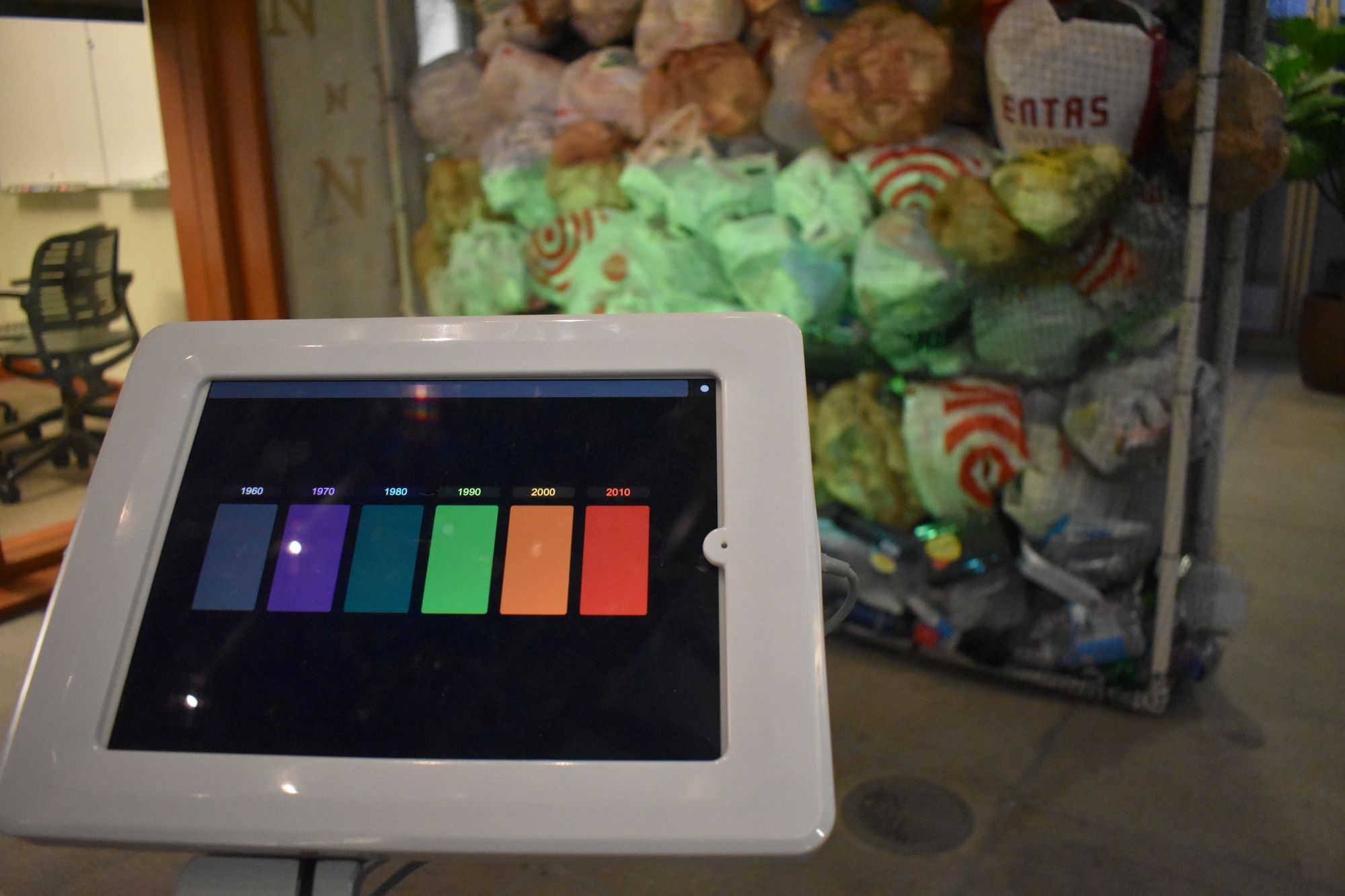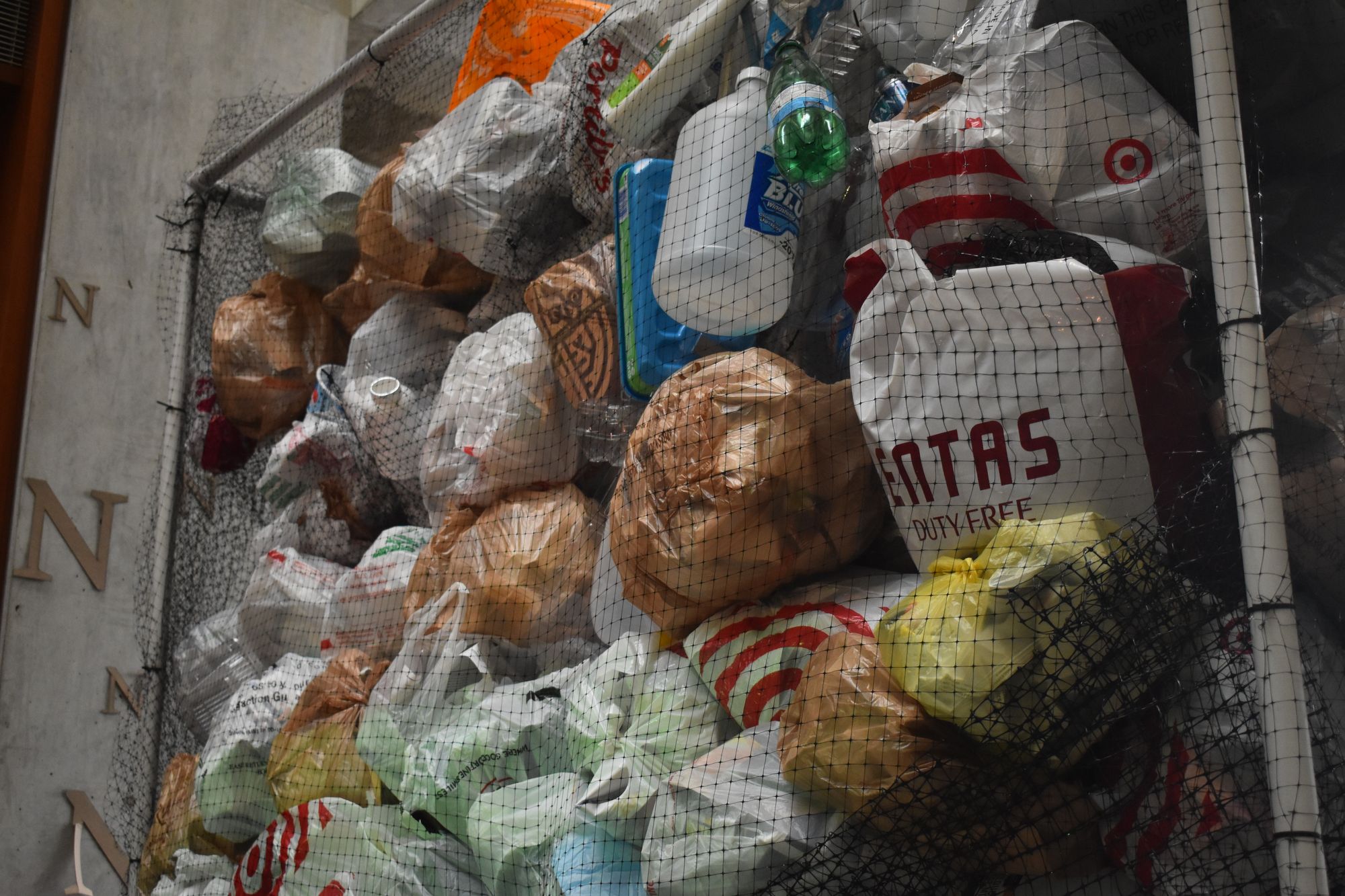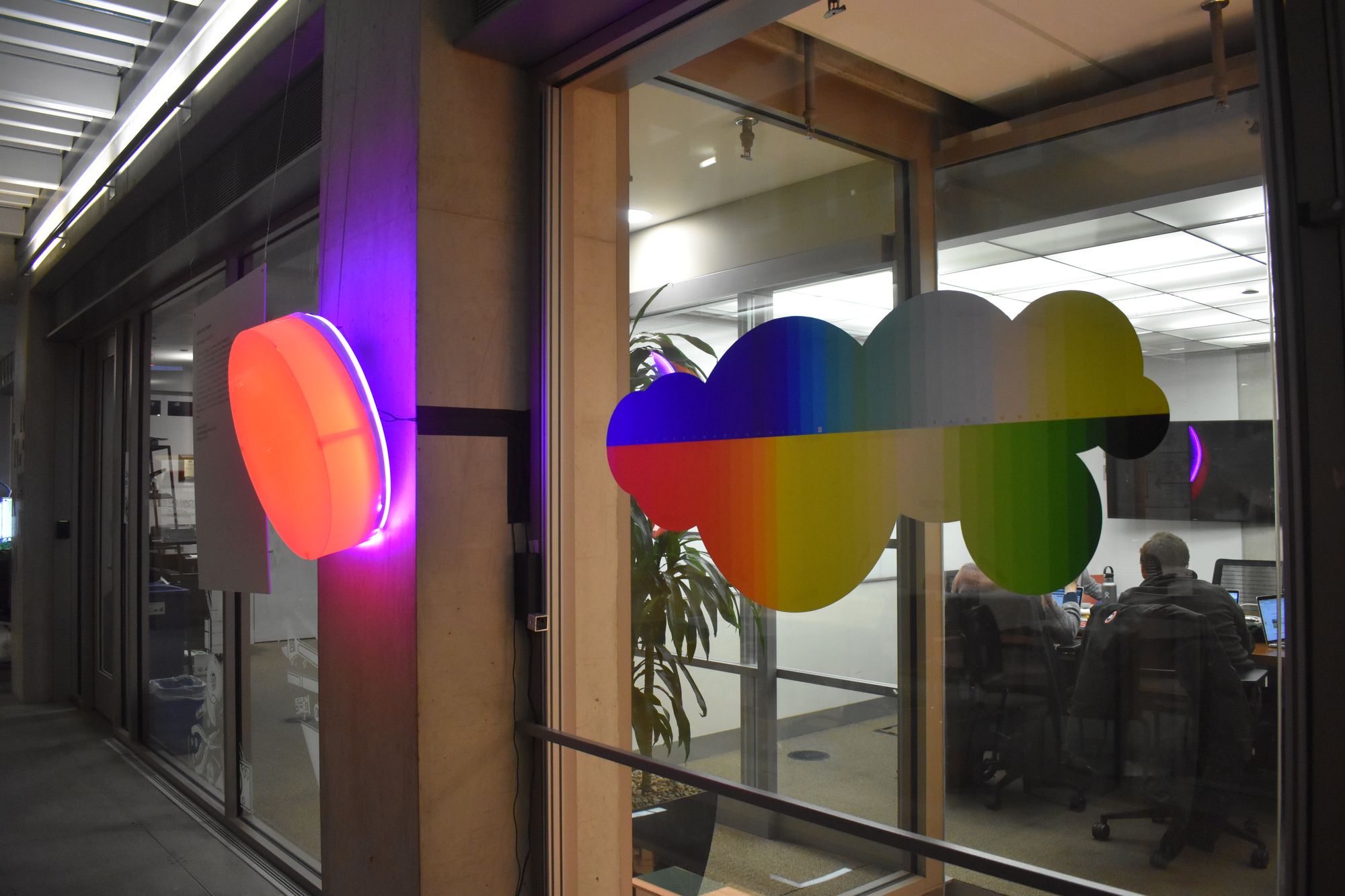




Students in the Ford Motor Company Engineering Design Center have been sitting at tables, completing their work and chatting with friends beside a wall of garbage. No, Mount Trashmore hasn’t made a guest appearance in the engineering center. The garbage is actually a student-created piece of installation art called “68 Megatons.” The project is meant to show the amount of plastic waste by decade between 1960 and 2015. An iPad-controlled projector shines light on the wall of waste, gradually lighting up more of the wall to demonstrate the increase in waste over time.
In the fall, five NU students commuted to the School of the Art Institute of Chicago (SAIC) each Friday, joining SAIC students in a class called Data as Art, which challenges students to display data visually. Taught by Professor Larry Birnbaum and Ph.D. candidate Scott Cambo, this course brought together students with art and engineering backgrounds.
“The intention of the class is to get students from different backgrounds to come together and use their different perspectives to make an art installation, using data as the medium,” Cambo said.
Four projects are now on display in Ford: “68 Megatons” is joined by “Lighten Up, Chicago!,” a project visualizing real-time temperature data in Chicago; “Light -> Sound,” which interprets the light in images of scenes from Chicago into sound; and “Their Weight in Water,” a project to demonstrate how much water it takes to produce certain everyday products. Just one pair of jeans, for example, can use 2,000 gallons of water in the manufacturing process.
“I really like the intersection of technology and art in creating interactive art pieces, or at least art pieces that required the person looking at it to do something more than just stare at it,” McCormick junior Eileen Holland said. “The data component should lead people to think more about how this art affects them.”
Holland worked on the project, “Light -> Sound” with two SAIC students, Xiangrui Zeng and Adriana Keech. She said that working with the SAIC students was the most fun part of the project, but also the most difficult. Simply getting to class took almost an hour by train.
Joe Burke, a master’s student in the class who graduated in December, echoed that statement. He traveled to Chinatown to meet up with group members, because it was a central location between where they all lived.
Burke said his project, “Their Weight in Water,” demonstrated the dilemma he feels about how consumerism affects the environment.
“I want to get into product design, but I wouldn’t want to just make things blindly without knowing how they impacted the planet,” Burke said.
“Their Weight in Water” shows the way that such products do impact the planet. The art project consists of a model that demonstrates sculptures representing how much water is used for each product as compared to a 1-inch person, and an augmented reality iPad app that allows the viewer to see the sculptures as if they were full scale.
“When it’s presented visually, it hits home a lot more effectively because it speaks to you in a language that you intuitively understand,” Burke said. “It’s not something that you need a specific set of skills to understand.”
One thing Cambo hopes students took away from this class is that data isn’t as objective as one might think it is. He said that data is “a mediated form of information” that is tied to various research or political agendas.
“It really breaks people away from this thinking of data as being just completely objective, which I think really lent itself to an art class where subjectivity is kind of the coin of the realm,” Cambo said. “Subjectivity is the thing that artists don’t try to hide, instead they try to cultivate it and try to really put that stamp on the thing that they present to the world.”